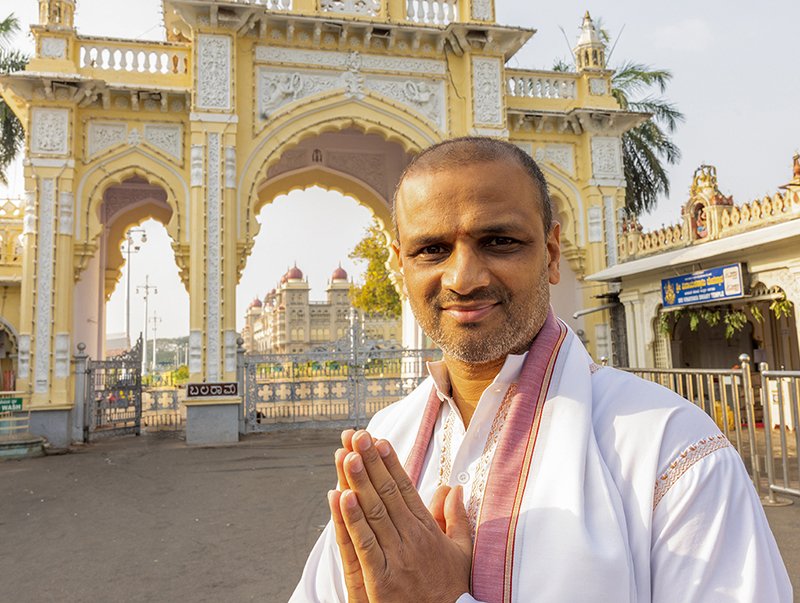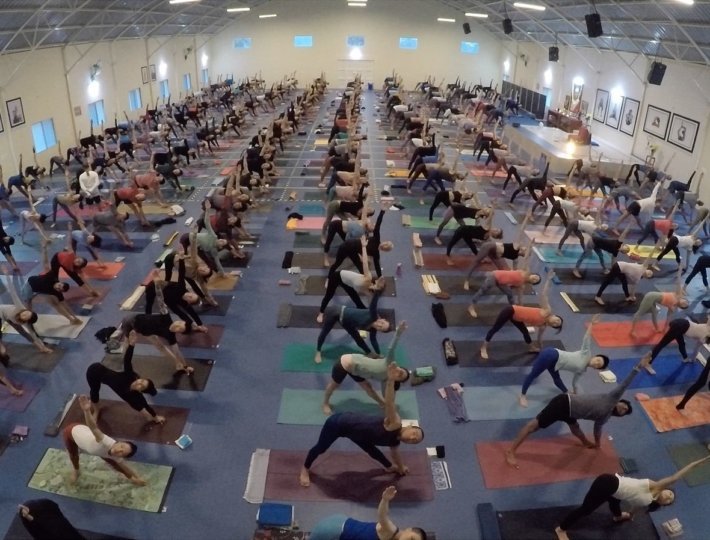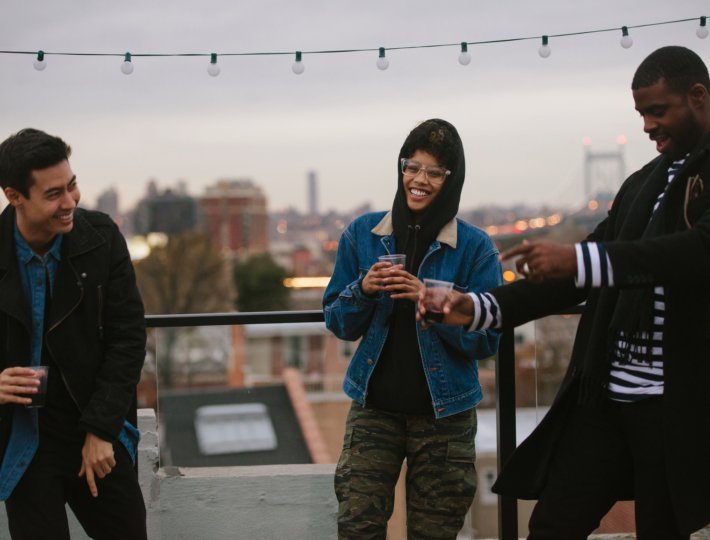The first panic attack I remember descended on me when I was 5 years old. I was lying in bed unable to fall asleep, and my mind was cycling through various disaster scenarios. Suddenly, I felt like I couldn’t breathe, my heart was racing, and I experienced a crushing fear that threatened to engulf me. These intense bouts of terror plagued me throughout my childhood and adolescence and into my early adulthood, often arising out of nowhere. Alongside panic attacks, I have grappled over the years with acute claustrophobia, a fear of flying, and an array of other free-floating worries that ebb and flow.
Outwardly, I’ve always appeared as a very together person. When people find out I struggle with anxiety, their reactions are typically, “You?” I’ve often wondered if those of us with anxiety disorders operate in the most high-functioning ways, since we have siphoned off all our fear and worry and redirected them through a set of very particular channels. In other words, as long as I wasn’t in the grips of a panic attack or feeling claustrophobic in an elevator, I was fine. More than fine. But the problem is that you never know when anxiety will seep in through the cracks, and when it does, it overtakes you completely.
When I was 30, I moved abroad for two years and experienced the worst anxiety of my life—panic attacks that seemed to last for days—but I also had the space and time to do some serious work in response to it. That work mainly took the form of some wonderfully healing therapy, a lot of journal writing, and a deepening of my yoga and meditation practice. I had a regular yoga practice before this, but I hadn’t delved deeply into the spiritual component of the practice, and meditation made me antsy. All of a sudden, I found that yoga and meditation were an extension of the other therapeutic practices. They offered a safe space in which I could have my feelings and, at the same time, connect to a part of myself that existed apart from the panic. Since then, yoga and meditation have remained my most valuable tools for keeping anxiety at bay and effectively handling it when it arises.
I go to a yoga class two or three times a week, and I find that when I’m the most reluctant to go—when I’m feeling out of sorts or disconnected—I’m the most grateful I went. Because of the intense physical engagement required in class, yoga has an uncanny ability to bring me into my physical self when my mental self is reeling. After an hour and a half of placing my consciousness in my arms, my feet, my spine, I’m able to move away from mental abstractions and come back into the comfort of my gravity-bound self.
Anxiety attacks involve physical reactions to mental stimuli, the same kinds of reactions you would have if you were in danger. This can sometimes cause what is called a feedback loop, whereby reactions of the sympathetic nervous system (heart racing, shortness of breath, tense muscles) send an alarm signal back to your mind, which then, in turn, causes an increase of fear. With its poses and stretches, yoga short-circuits this loop, calming down the body and thereby reminding the mind that there is no actual threat.
After an hour and a half of placing my consciousness in my arms, my feet, my spine, I’m able to move away from mental abstractions and come back into the comfort of my gravity-bound self.
I have also become a committed meditator, sitting regularly at home and at a Buddhist center (although I’ve never quite managed the daily practice that most meditation teachers recommend). As with yoga, the simple act of sitting on the cushion forces my mind to settle into my body. What’s more, the very shape of the posture—cross-legged seat, upright spine, wide collar bones, hands resting on the knees—is reassuring. Its open-heartedness instills an immediate willingness to take in the world around me, rather than to shut down before it, an instinct that is often at the root of anxiety attacks.
My meditation practice has been mostly in the Shambhala Buddhist lineage, which teaches the breath as a point of focus. As I sit, my breath becomes slow and even, which, much like doing calming physical exercises in yoga, sends a message to my mind that I am, in reality, safe. Since shortness of breath is one of the trademarks of my anxiety attacks, the breath as a point of focus works especially well for me, but some traditions suggest a candle, a mantra, or a visual image instead. The idea is that the single-pointed focus allows you to disengage from your mind’s never-ending stream of thoughts, turn them into background noise, radio static, and ultimately let them dissipate.
This is not easy work, but it never ceases to amaze me how powerful even a 10-minute sit can be. These days, I’m able use it the way other people might use an anti-anxiety medication that can be taken the moment a panic attack threatens. Instead, when I feel anxiety arise, as soon as it’s feasible to do so, I find a quiet place to sit and focus on my breath, gently (and, hardest of all, non-judgmentally), watching my thoughts and then letting them float away into the ether. It is instantly and deeply therapeutic.
A few years ago, I started reading Buddhist and yogic philosophy, which gave me more concrete ways to think about the healing effects of yoga and meditation. In theYoga Sutras, an ancient Indian text that is foundational to yoga, the author, Patanjali, expresses a sentiment common to many teachings: the purpose of yoga, he says, is to still the fluctuations of the mind so that “pure awareness can abide in its very nature.” He goes on to warn that, “Otherwise awareness takes itself to be the patterns of consciousness.”
I began to think of my mind as comprised of two parts: a busy part and a more placid part, which, like a calm sea, reflects movement without being disturbed by it.
The idea of an awareness separate from our conscious thoughts may seem esoteric, but it is actually an incredibly useful tool for an anxiety sufferer. I began to think of my mind as comprised of two parts: a busy part and a more placid part, which, like a calm sea, reflects movement without being disturbed by it. Modern yogis sometimes refer to this as the “witness consciousness.” (It’s a bit like the part of your mind that remains sober when you’re drunk, watching your silly shenanigans and shaking its head.)
I’m now able to tap into this consciousness off the mat. Sitting on an airplane or at a Christmas dinner, I can watch my own anxiety arise and dissipate, without getting carried away by it and without becoming fearful about the fear, which is the meanest trick anxiety plays on its victims. I’m able to regard my own anxiety with curiosity and sometimes even a hint of amusement. “So this is making you anxious,” I recently found myself thinking, while prostate on the bathroom floor with food poisoning. “How interesting!”
I’m relieved to report that I haven’t had a full-fledged panic attack since I got back from living abroad about six years ago. I also have much less—and much less intense—day-to-day anxiety than I used to. But that doesn’t mean that I’ve cured myself of claustrophobia or become immune to a host of other triggers. Those of us who live with anxiety know that it comes and goes but that it never goes away completely. Managing anxiety is an ongoing process that requires discipline and, ironically, fearlessness. For me, a big part of it is getting on my yoga mat or meditation cushion, whether I’m feeling solid or shaky that day, and facing what comes up. The last several years of my life have represented a new kind of freedom from the chains of anxiety, and it has caused a profound shift in the way it feels to be in my skin. I no longer move through life in a state of trepidation, bracing myself for the next crashing wave of anxiety, and I feel much more peaceful and able to enjoy the moment. Like the gentle warrior in Buddhist teachings, I’m bravely taking on my own anxious mind.








Comments (5)